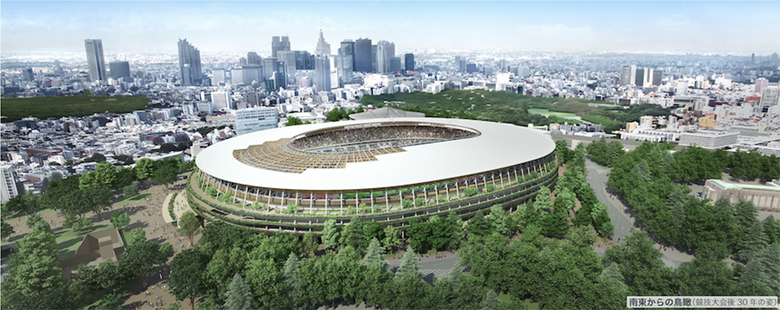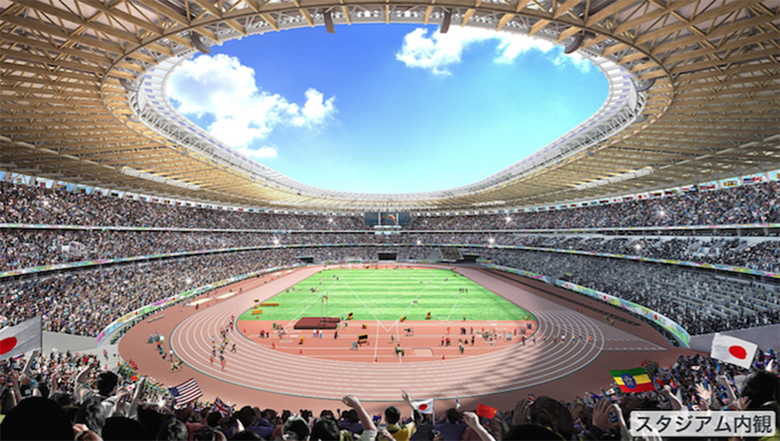Kengo Kuma Selected for Tokyo Olympic Stadium
John Hill
22. december 2015
Image courtesy of Japan Sports Council
One week after revealing the two finalists in the second design competition for the 2020 Tokyo Olympic Stadium, the Japan Sports Council has selected the winner, a wood and steel structure designed by Japanese architect Kengo Kuma.
The design – referred to as Design A in the competition and already known as the "hamburger" on social media in Japan – beat out Design B by Toyo Ito and will serve as the replacement for the scrapped design by Zaha Hadid, who won the first competition at the end of 2012. Kengo Kuma's winning design will cost just over half as much as Hadid's design, the main reason for abandoning her design earlier this year and holding another competition. The Japan Times coverage of Kuma's victory comes with a comparison of the three schemes (note the size and capacity of the new stadium, some of which must count for the reduced cost):
Graphic via The Japan Times
Kuma's overtly wooden design is marked by planted perimeter terraces and a low profile, the latter thanks to placing the field below grade. Even though the design is a strong departure from the undulating lines of Hadid's design, the ousted architect said in a statement that Kuma's stadium has "remarkable similarities [to] our original detailed stadium layout and our seating bowl configuration."
Image courtesy of Japan Sports Council
According to The Japan Times article, Kuma's scheme bested Ito's by only 12 points – 620 points to 608 pionts –in the Japan Sports Council's judging: "Tipping the balance was the estimated construction time. While both teams projected that construction would be done by November 2019, design A received 177 points in this category, but design B got only 150. Architect and critic Takashi Moriyama said the 27-point difference could be attributed to the panel taking a cautious stance so as to avoid making the same mistake as was made in July," when Hadid's design was abandoned.
Image courtesy of Japan Sports Council
Kuma submitted the winning design with construction firm Taisei Corp. and construction support firm Azusa Sekkei Co. Construction is set to start as early as December 2016 so the stadium can be completed in late 2019, in time for the opening ceremonies of the Summer Olympics in July 2020.
Gerelateerde artikelen
-
Kengo Kuma Selected for Tokyo Olympic Stadium
on 22-12-2015



